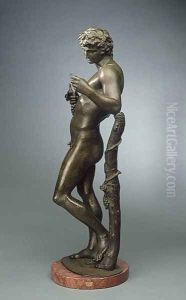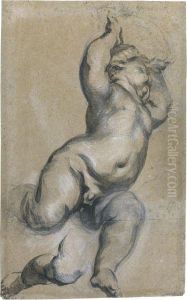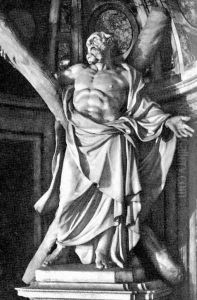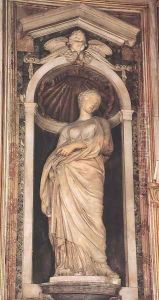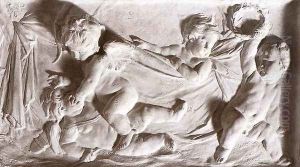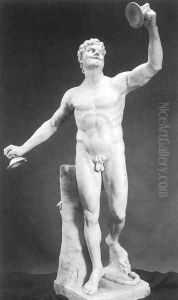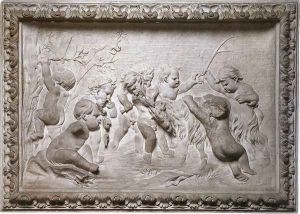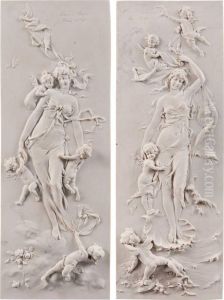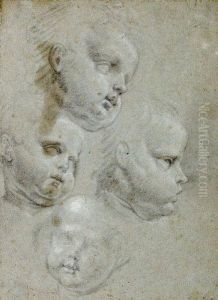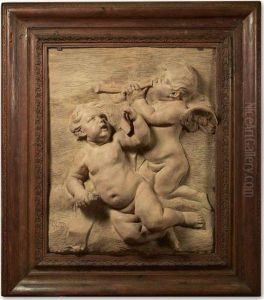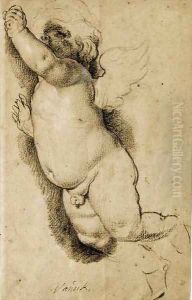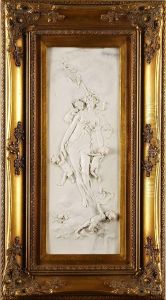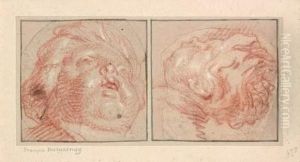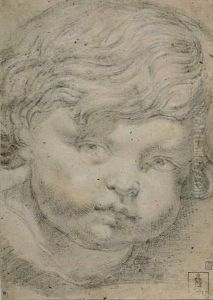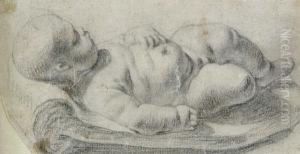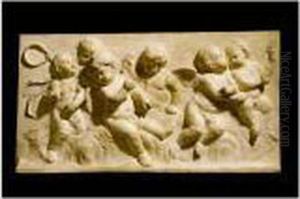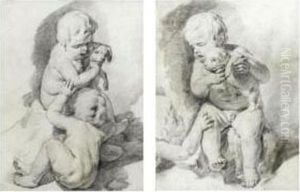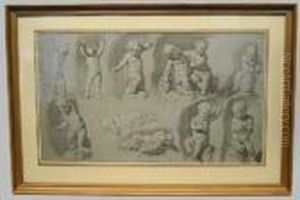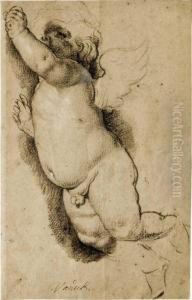Francois Duquesnoy Paintings
François Duquesnoy, also known as Frans Duquesnoy or Franciscus Duquesnoy, was a Flemish Baroque sculptor who was born in Brussels in 1597. He is often associated with the stylistic shift from the late Renaissance to the Baroque period in sculpture. Duquesnoy's work is characterized by its delicate modeling and the sweet, gentle expressions of his figures, which contrast with the more dramatic style of his contemporaries.
Duquesnoy's father, Jerôme Duquesnoy the Elder, was also a sculptor, and it is believed that François received his initial training in his father's workshop. He later traveled to Rome, which was a center for artistic learning at the time, to study the ancient sculptures as well as the works of contemporary artists. In Rome, Duquesnoy became associated with other prominent artists of the era, including Gian Lorenzo Bernini, though his style differed significantly from Bernini's more theatrical approach.
In Rome, Duquesnoy quickly gained a reputation for his finely detailed sculptures, particularly those of children, which were known as 'putti'. His most famous work is arguably the statue of Saint Andrew in St. Peter's Basilica, which showcases his mastery of form and composition, as well as his ability to convey deep emotion.
Duquesnoy's influence extended to the development of Flemish sculpture and beyond, as his work was highly regarded by his peers and future generations of artists. His approach to sculpture, with its emphasis on classical restraint and harmonious proportions, helped to establish a Baroque style that was less ostentatious than that of some of his Italian contemporaries.
The sculptor's life came to an abrupt end when he died under mysterious circumstances in Livorno, Italy, in 1643. François Duquesnoy's legacy remains significant in the history of Western art, as he played a crucial role in the transition between Renaissance and Baroque sculpture, and his works continue to be studied and admired to this day.
